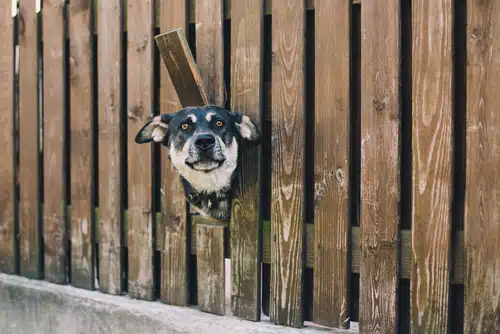Home » Blog » Pet » Pet Parenting Lifestyle » 5 Ways To Get Involved On World Wildlife Day 2023
Categories
Tags
animal welfare
breed profile
buying a car
buying a pet
Car
car accessories
car care
car features
car insurance
Car safety
car sales
car service
cat
cat behaviour
cat body language
Cat Breeds
cat food
cat insurance
comprehensive car insurance
Dog
Dog Behaviour
dog body language
Dog Breeds
dog food
Dog Insurance
dog training
eco friendly cars
Kitten
New Car
pet accessories
pet activities
Pet Adoption
pet breeders
pet days of the year
pet fun stuff
Pet Health
pet insurance
pet parenting
Pet Safety
pet services
Puppy
rescue pets
road safety
road trip
safe driving
Recent Blog:
Facebook Posts
4 days ago
Growing old sometimes means we can’t take care of pets anymore. Find out some advice on what to do when this happens:![]()
![]() Senior Pet Parents – Contingency Plans for Your Pet – bit.ly/44bzwkS
... See MoreSee Less
Senior Pet Parents – Contingency Plans for Your Pet – bit.ly/44bzwkS
... See MoreSee Less
Senior Pet Parents' Contingency Plans for Pets
www.pd.com.au
Sometimes senior pet parents need more downtime. For older pet owners, this can be tricky to navigate if their dog or cat is full of beans and wants to6 days ago
Before you rev up the engine, let’s run through a checklist of things to do before starting your car. Not only do these steps ensure your safety (and that of others around you), but they also help in maintaining your vehicle's longevity.![]()
![]() Driving Tips: Your Checklist Before Starting Your Car -
... See MoreSee Less
Driving Tips: Your Checklist Before Starting Your Car -
... See MoreSee Less
Driving Tips: Your Checklist Before Starting Your Car
www.pd.com.au
Heading out for a drive? Hold up a second! Whether you're dashing off to work, running errands, or embarking on a road trip adventure, there are a few2 weeks ago
Are intestinal worms setting up camp in your dog’s gut without paying rent? Here’s how to spot the main culprits and get rid of them too:![]()
![]() Preventing, Identifying and Treating Intestinal Worms in Dogs - bit.ly/43YjCKu
... See MoreSee Less
Preventing, Identifying and Treating Intestinal Worms in Dogs - bit.ly/43YjCKu
... See MoreSee Less
Preventing, Identifying and Treating Intestinal Worms in Dogs
www.pd.com.au
Intestinal worms, such as roundworms in dogs are one of the least glamorous topics on the planet. These intestinal parasites that basically use our dogsWorld Wildlife Day 2023 is nearly upon us! Held on March 3 every year, the day is an international observance invented to celebrate and raise awareness of the world’s wild animals and plants. Created by the United Nations, it marks a time to be particularly mindful of our part in wildlife conservation as pet parents.
With 28.7 million pets in Australia, their carbon pawprint combined with ours is a big deal, to say the least. They’re also one of the dangers to the lives of wildlife, usually innocently of course.
You may be feeling a little bit intimidated by this important event and wonder what you could do to take part. The truth is, there are small and simple things you can do to make a positive impact on the environment. If everyone did their part, imagine the change we could make!
Here are some ideas to get you going.
Table of contents
- What is World Wildlife Day?
- Get involved with World Wildlife Day
- 1. Make eco-friendly choices this World Wildlife Day 2023
- 2. Manage your pet well
- 3. Don’t feed the animals this World Wildlife Day 2023
- 4. Support wildlife conservation organisations
- 5. Beware what you plant this World Wildlife Day 2023
- Ensure your own wildlife is insured
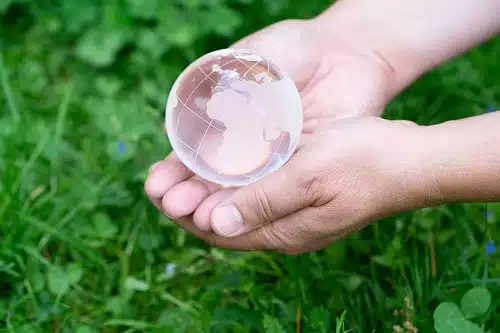
What is World Wildlife Day?
As mentioned, World Wildlife Day is used to celebrate the many beautiful and diverse species that inhabit Australia and our planet. It highlights the urgent need for wildlife conservation to protect them from threats such as habitat loss and climate change.
World Wildlife Day is a platform for governments, organisations, and you and I to come together and start maintaining the health and balance of our ecosystems. Considering that 1 in 8 animals are threatened with extinction, it’s never been more urgent to play our part.
Get involved with World Wildlife Day
Australia boasts unique, varied wildlife. We have creatures you won’t find anywhere else in the world! Unfortunately, our beautiful animals are also vulnerable. Habitat loss, climate change, invasive species and hunting all threaten their future.
As animal lovers, pet parents can play their part. Here are some ideas:
1. Make eco-friendly choices this World Wildlife Day 2023
Consumers have massive power when it comes to how they shop. What you buy dictates what’s produced … or not produced. Putting our dollars behind products that don’t harm the environment is a huge way you can have an impact.
Here are some for your consideration:
- Consider feeding your pet a diet that’s based on sustainable and locally-sourced ingredients. This helps reduce the carbon footprint of pet food production and supports local farmers. Read more in our article: Eco Friendly Dog Food.
- Look for toys that are made from sustainable materials and are packaged in environmentally-friendly ways – like these.
- Cat litter is a big one too – think about how often you change it. Do your best to use a product that’s safe for the environment. Look into this organic one and the selection of natural litters here.
- When you take your dog for a walk, use biodegradable waste bags to dispose of their waste (and make sure you understand puppy poop etiquette). This helps reduce the amount of plastic waste that ends up in landfills. Check out these on Petcircle.com and these at Bonnie Bio.
- Consider investing in a pet bed made from sustainable materials, such as organic cotton or recycled materials. We love these by Indie Boho.
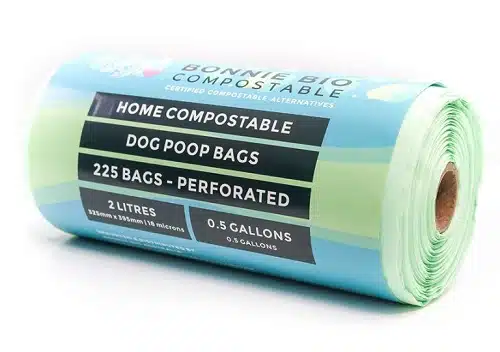
2. Manage your pet well
Did you know that dogs and cats can do damage to wildlife species, both unintentional and intentional?
Dogs and cats are naturally predatory, so it’s in their nature to hunt and stalk birds and other animals. Whether you’re at the beach or in the bush, make sure your pet isn’t chasing birds, mammals and other wildlife. This is very distressing to wildlife and can disturb their much-needed nesting, R&R and foraging.
They also impact habitats by trampling on vegetation and digging in the soil. Furthermore, domestic dogs and cats can spread diseases to native wildlife, which can have a serious impact on their health and survival. Check out our piece ‘Keeping Coastal Wildlife and Dogs Safe‘ for more info.
A simple way you can lessen their effect on the environment this World Wildlife Day 2023 and beyond is by keeping them on a leash when you’re outside. Pets in Australia should be on a leash by law anyway.
Further, adhere to rules about entering national parks – they’re there for a reason!
When it comes to cats, consider making your fur ball an indoor cat – not only does this stop them from killing birds and small animals, but it protects them from dangers like cars and other territorial or aggressive cats. You can erect cat-proof fencing or build a catio to keep them comfortable while bringing the outdoor in.
Check out this amazing catio below:
3. Don’t feed the animals this World Wildlife Day 2023
It may sound simple, but another simple way pet parents can protect animals this World Wildlife Day 2023 is by not feeding wild animals. It’s illegal for a start, and can disrupt their natural behaviour, causing them to become dependent on human food.
When animals become dependent on human-provided food, they may start to lose their natural foraging behaviours and be less able to find food on their own. This can lead to malnourishment and impacts their overall health.
Feeding wildlife can also attract animals to human-occupied areas, where they may become a nuisance or pose a threat to people. For example, kangaroos or dingos can get used to people and lose their fear of us, which can lead to dangerous interactions.
This video has extremely important info you probably don’t know about feeding wild animals:
4. Support wildlife conservation organisations
Australia has several wildlife conservation projects underway aimed at protecting and conserving the country’s unique and diverse animals. You can make a monetary donation or volunteer your time at some of them this World Wildlife Day 2023 and beyond.
Here are a few organisations to consider:
Australian Wildlife Conservancy
A non-profit organisation that works to protect native wildlife and their habitats across Australia. It operates several animal sanctuaries and provides support for wildlife conservation projects throughout the country. You can donate to it, or volunteer to help on its reserves and research projects or to helping with administrative tasks.
WWF-Australia
This is the Australian branch of the World Wildlife Fund. It focuses on a range of issues including protecting threatened species, reducing greenhouse gas emissions, and conserving marine life. You can help via a monetary donation, volunteering to help with fundraising and administrative tasks, or choosing sustainable products and supporting companies that are committed to sustainability.
WildArk
WildArk is a conservation organisation that works to protect and conserve wild places and wildlife across the world. It operates several projects in Australia and works with local communities to support their environmental efforts. As well as all the ways to help listed above, you can support WildArk by visiting their eco-tourism destinations and by sharing information about their work with your friends and family.
Side note: Animals are often named after the place they were discovered or by the person that first documented them. But the Tasmanian Tiger is different because it’s named after the last place it was seen alive. Learn more about the Tasmanian Tiger in this ‘Our Tassie Tiger Could Make a Comeback – Here’s How‘ article.
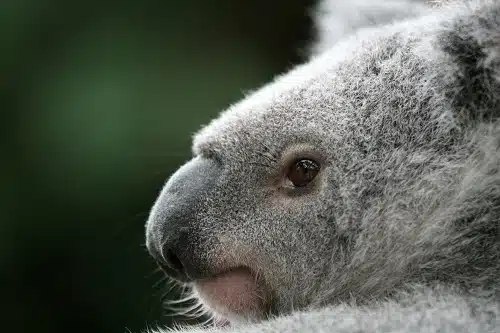
5. Beware what you plant this World Wildlife Day 2023
This World Wildlife Day 2023, become more aware of what you’re planting in your garden.
Wherever possible, choose native Australian species over invasive plants. They’re an integral part of the ecosystem and support the biodiversity of the area. Native plants provide essential habitats for birds, insects, mammals, and reptiles; by planting them you’re giving these species a place to live, feed, and breed.
Native species are adapted to the local climate and environmental conditions, which means they’re well-suited to withstand the impacts of climate change. Planting them increases the resilience of the ecosystem and ensures wildlife will have a secure future. They also improve soil health by reducing erosion and increasing organic matter and require less water than non-native species.
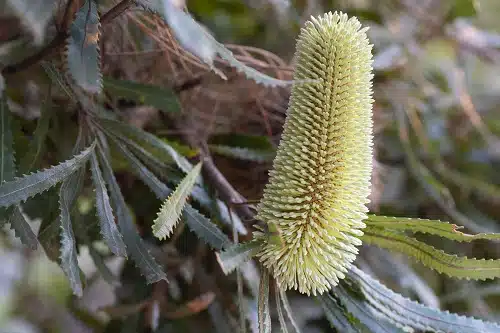
Ensure your own wildlife is insured
Now you know what you can do as a responsible pet parent working towards wildlife conservation this World Wildlife Day 2023. Another responsible act is ensuring your pet has insurance in the case of an accident or emergency. That way you won’t have to weigh up their health against your pocket, which means less stress for you and their vet.
Pet insurance is a no-brainer. It’s affordable for your bank account and helps you give your dog or cat immediate access to medical testing, treatments, hospitalisation, medication and more for accidental injuries and a wide range of illnesses. Why not get a quote today?
Share On:


